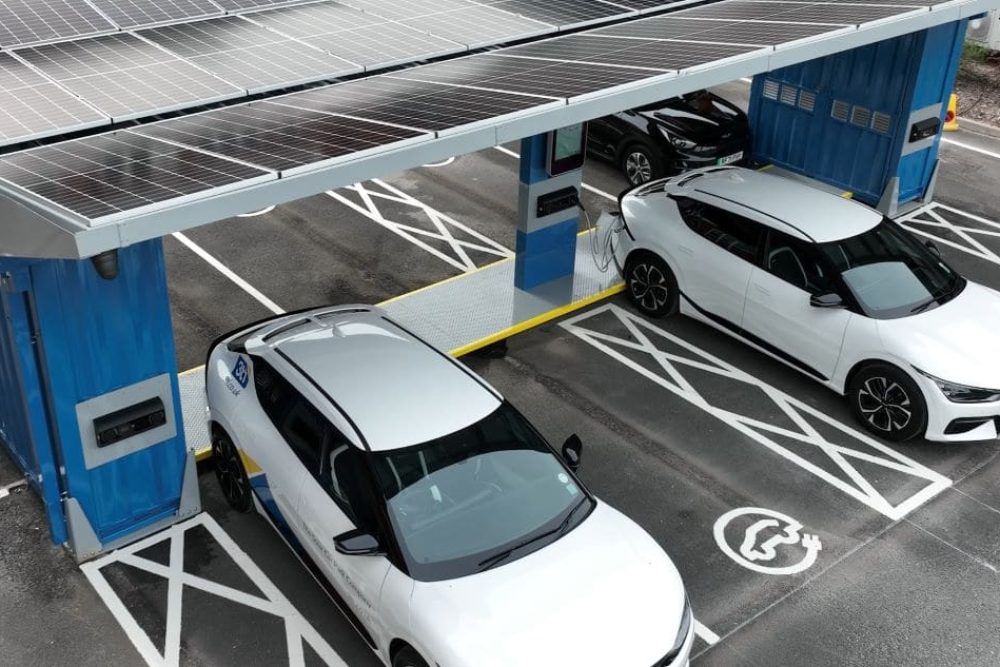DHL ranked as the current most efficient courier fleet
Options looked at the biggest companies around the world when it comes to delivery fleets, to rank which is the most sustainable behind the likes of Amazon.
|
Company |
Number Of Ground Delivery Fleet Vehicles |
Current Number Of EVs In Fleet |
% EV |
Annual CO2 Savings Through EV Conversion (tonnes) |
|
DHL |
119,000 |
29,000 |
24.37 |
414,900 |
|
Amazon |
100,000 |
12,000 |
12.00 |
405,680 |
|
Royal Mail |
47,700 |
5,000 |
10.48 |
196,847 |
|
UPS |
125,000 |
10,000 |
8 |
530,150 |
|
USPS |
220,000 |
9,250 |
4.2 |
971,558 |
|
FedEx |
86,100 |
662 |
0.77 |
393,869 |
DHL has around 119,000 road vehicles. Despite being the third largest courier company, with a market cap of $57.59 billion/£45.25 billion, and third, for overall fleet vehicles behind USPS and UPS, they boast the highest number of electric delivery vehicles in their current fleet with a total number of 29,000 now operational. This equates to close to a quarter of their entire fleet (24%).
Thanks to DHL’s push to be more eco-friendly, they are currently saving the equivalent of 6,609 garbage trucks of waste being sent to landfills instead of recycled (133,690 tonnes). If they were to convert the rest of their fleet, they’d up that figure to 20,509 garbage trucks worth of waste.
FedEx ranks as the worst courier company for sustainability
The second largest courier company in the world, FedEx, currently has the worst fleet when it comes to sustainability.
According to the most recent data available, Leasing Options has revealed that FedEx’s fleet currently stands at 86,100 total vehicles, however, only 150 of those vehicles are electric. This means only 0.8% of their fleet is eco-friendly.
This means that today FedEx’s emissions stand at around 393,869 tonnes per year, which equates to the energy used by just under 50,000 homes per year.
When analysing the market leaders, it became clear that two companies in particular had set mighty, but positive goals and two others that appear to be in danger of being left in their rival’s dust.
Amazon leading the way for sustainable fleets
Amazon has already begun making great strides when it comes to moving towards a more sustainable fleet. Their partnership with Rivian has been their biggest announcement to date, as it will provide Amazon with 100,000 electric delivery vehicles that will be on the road by 2030.
But Amazon isn’t looking to wait for 2030 before making changes. They’ve already rolled out 10,000 new electric delivery vans in the United States. They’ve already delivered 300 new vans to Germany that’ll join thousands more already in operation in Europe, and they’re further expanding its electric cargo bike fleets across the UK in Manchester, London and Glasgow.
FedEx & Royal Mail Race Towards 2040 Zero Carbon Target
Despite being the worst on our list for their current-day fleet, FedEx may pull it around before some of their major competitors. According to a press release on its site, FedEx highlights three main goals;
-
By 2025: Aim to make 50% of parcel pickup and delivery vehicle purchases electric.
-
By 2030: Targeting 100% of parcel pickup and delivery vehicle purchases to be electric.
-
By 2040: Plan to transition the entire parcel pickup and delivery fleet to electric vehicles.
As for the Royal Mail, they’ve accelerated their ambition to reach Net Zero by 2040, in a project called “Steps To Zero”. According to their sustainability report on zero-emission deliveries, the service is still running 5,000 electric vans to date. However, due to amount of “posties”, 85,000 in total who walk up to a billion steps a day, the Royal Mail are looking to optimise on-foot deliveries with vans delivering to central hubs that serve several posties at a time, reducing the number of vans required overall.
DHL & USPS To Fall Behind
Despite having the most sustainable fleet today, DHL currently has no set zero emissions target. What DHL has announced so far is that they plan to have more than 80,000 e-vehicles on the road by 2030 by investing €7 billion/£6 billion/$7.6 billion to electrify their last-mile delivery service. They also state that if they were not to do anything, DHL’s annual emissions would likely rise to a staggering 46 million tonnes by 2030. This is equivalent to greenhouse gas emissions from over 10 million gasoline-powered passenger vehicles driven for one year!
The US Postal Service on the other hand has announced plans to increase its electric delivery vehicle fleet by acquiring a minimum of 66,000 battery-electric vehicles by 2027. As part of a $9.6 billion/£7.5 billion investment, the Postal Service will purchase at least 60,000 next-generation delivery vehicles with a commitment to make at least 45,000 of them electric.
The USPS did state that they will be exploring the possibility of fully electrifying their entire delivery fleet but no concrete date was given.








